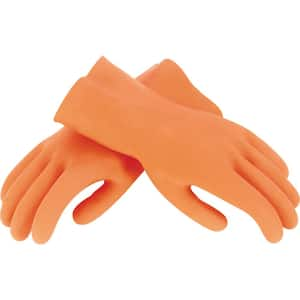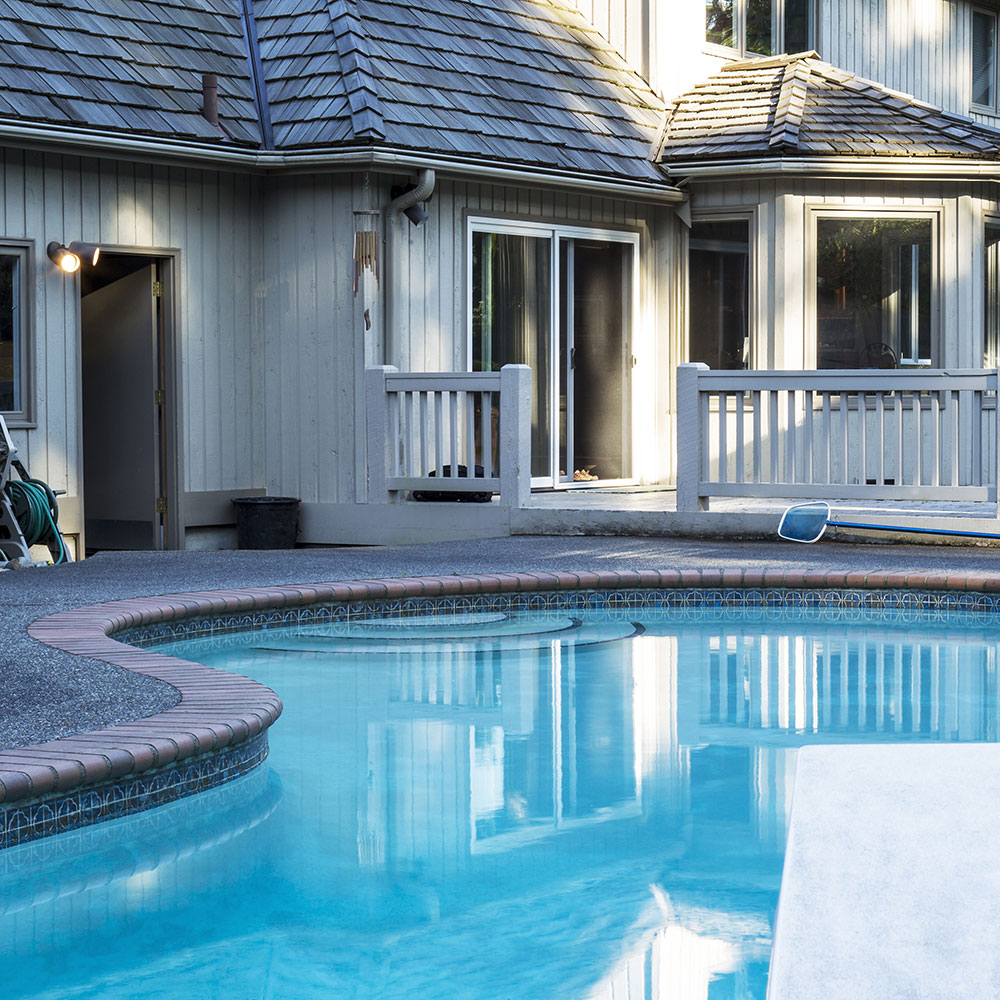
Difficulty
Beginner
Duration
2-4 hours
Algae is a frequent problem in residential swimming pools, but thankfully, it's one that you can take care of on your own. A living plant organism, algae can appear suddenly. It can clog filters, reduce water circulation and lower the effectiveness of your pool chemicals. Factors like low chlorine levels, heavy rains and high heat can cause algae to flourish and make matters worse. Here’s how to get rid of algae in the pool, step by step.
How to Treat Green Algae
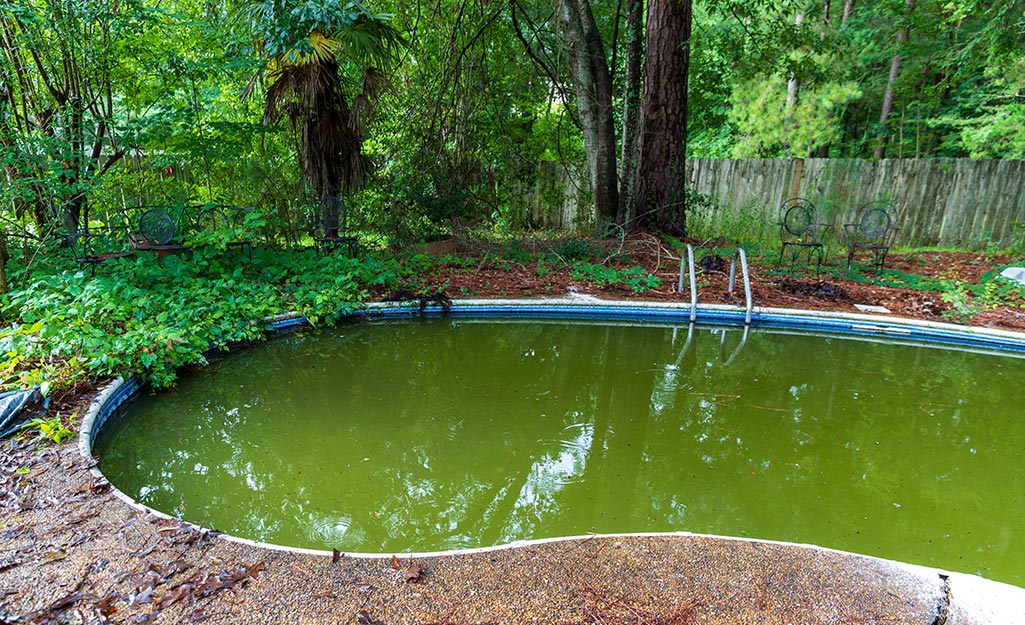
Green algae is the most common type of algae you’re likely to encounter in your swimming pool. This type of algae forms free-floating clouds that make the water appear murky, with a greenish tinge. Green algae also sticks to the pool floor and walls, making them slippery. Green algae is the easiest type of algae to treat and prevent.
To remove green algae from your pool, follow these steps:
- Use a pool water test kit to test your pool for chlorine, stabilizer and pH level.
- Add a pool shock product to boost any residual chlorine in the pool. Follow the label directions carefully.
- Use a pool brush to vigorously scrub any pool surfaces covered in algae, including the walls, floors and steps.
- Apply a green algaecide according to the directions on the label.
- Let the water circulate for 24 hours, then brush the pool surfaces again.
- Vacuum or backwash to remove any remaining dead algae.
Once you’ve performed these steps, test your pool water again to make sure all levels are within the ideal range:
- Free chlorine (1 - 4 ppm)
- pH (7.2 - 7.6)
- Alkalinity (80 - 150)
- Calcium hardness (200 - 275)
How to Treat Mustard Algae
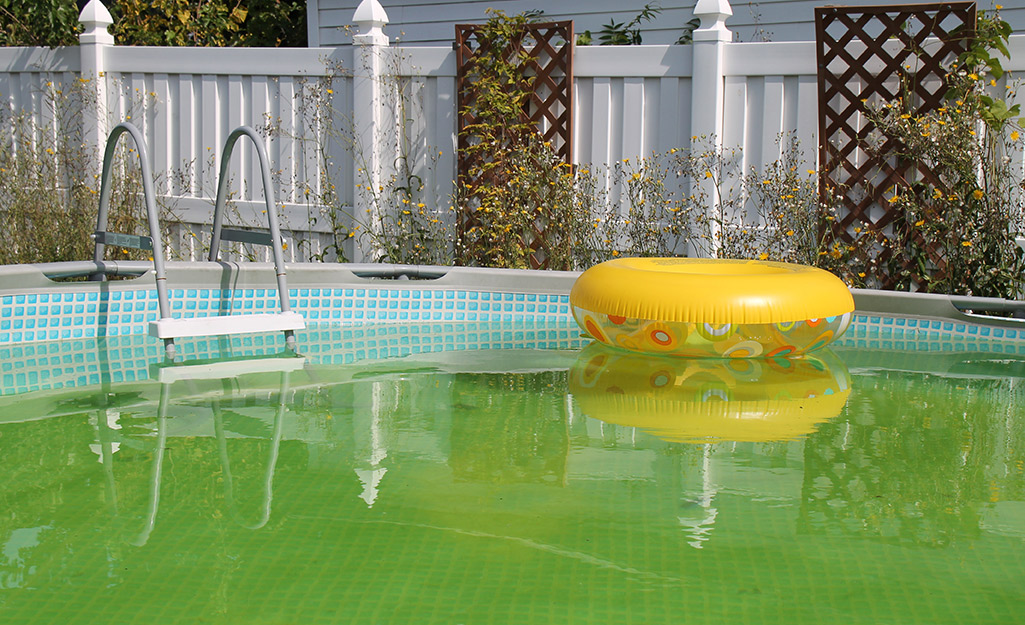
Mustard algae is yellow in color, and it’s rarer than green algae. It’s also more difficult to remove. Mustard algae typically looks like yellowish-brown or appears as dirt-colored spots on the floor and walls of your pool, often in shadier spots. Although mustard algae is fairly easy to brush away from the pool surface, it can quickly return.
One of the main reasons why mustard algae is so difficult to remove is that it can adhere to anything that enters the pool. Once you remove the algae, thoroughly clean everything that has been in touch with the water, including toys and swimsuits. To remove mustard algae from your pool, follow these steps:
- Test and balance your pool chemical levels using a test kit.
- Boost any residual chlorine by adding a quality pool shock product according to label directions.
- Use a pool brush to vigorously scrub the surfaces where the algae has grown.
- Use a vacuum or backwash the pool to remove the dead algae.
- Apply a mustard algaecide following the label directions.
- Allow the water to circulate for 24 hours.
- Use a pool vacuum or backwash the pool again to remove the remaining dead algae. In persistent cases, brush the pool and apply algaecide once more after two to four days.
After treating, test and balance your pool chemicals and levels again. The ideal ranges are:
- Free chlorine (1 - 4 ppm)
- pH (7.2 - 7.6)
- Alkalinity (80 - 150)
- Calcium hardness (200 - 275)
How to Treat Black Algae
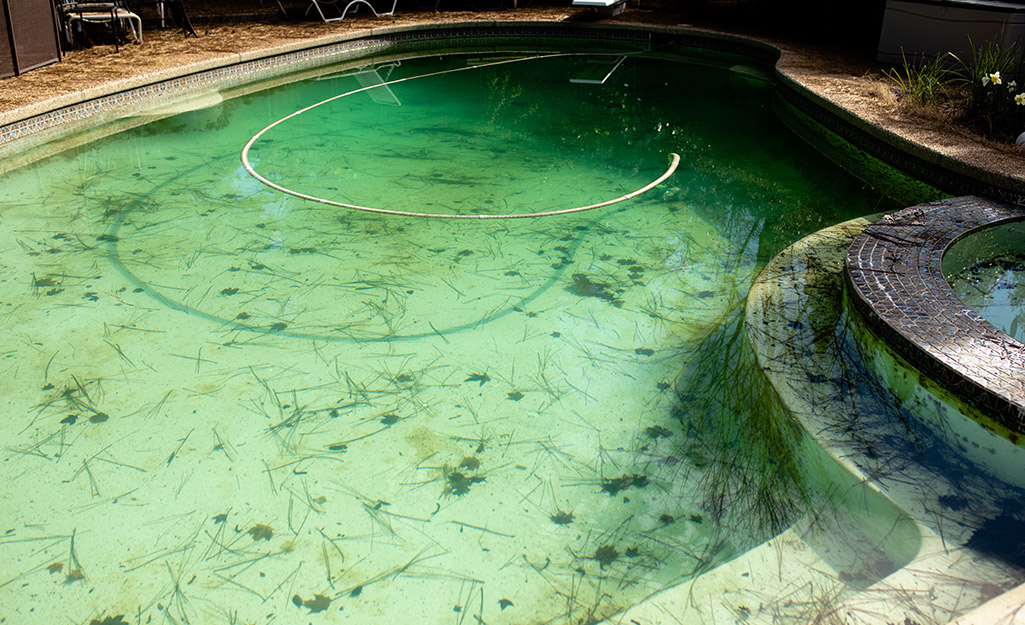
Black algae is a stubborn organism. Its protective outer layer sets roots into the surfaces it clings to. This makes it one of the toughest algae strains to get rid of. Black algae appears as black spots on pool surfaces. Treatment needs to be aggressive and requires a good deal of scrubbing. To remove green algae from your pool, follow these steps:
- Test your pool chemicals and pH levels with a pool test kit to ensure they’re balanced.
- Apply a pool shock product according to the label directions to help boost any residual chlorine.
- Scrub the black algae with a pumice stone (on a plaster pool only) or a stiff-bristled brush to break up its protective layer.
- Use a pool brush to vigorously scrub all of the affected areas where the black algae has spread.
- Vacuum the algae debris.
- Apply a black algae treatment according to the label directions.
- Let the water circulate for 24 hours.
- Remove the dead algae by vacuuming or backwashing. If the algae persists, repeat steps three to seven in another two to four days.
Once you’ve completed these steps, perform a final test of your pool water to ensure that all levels are in the ideal ranges:
- Free chlorine (1 - 4 ppm)
- PH (7.2 - 7.6)
- Alkalinity (80 -150)
- Calcium hardness (200 - 275)
Pool Algae Control & Prevention
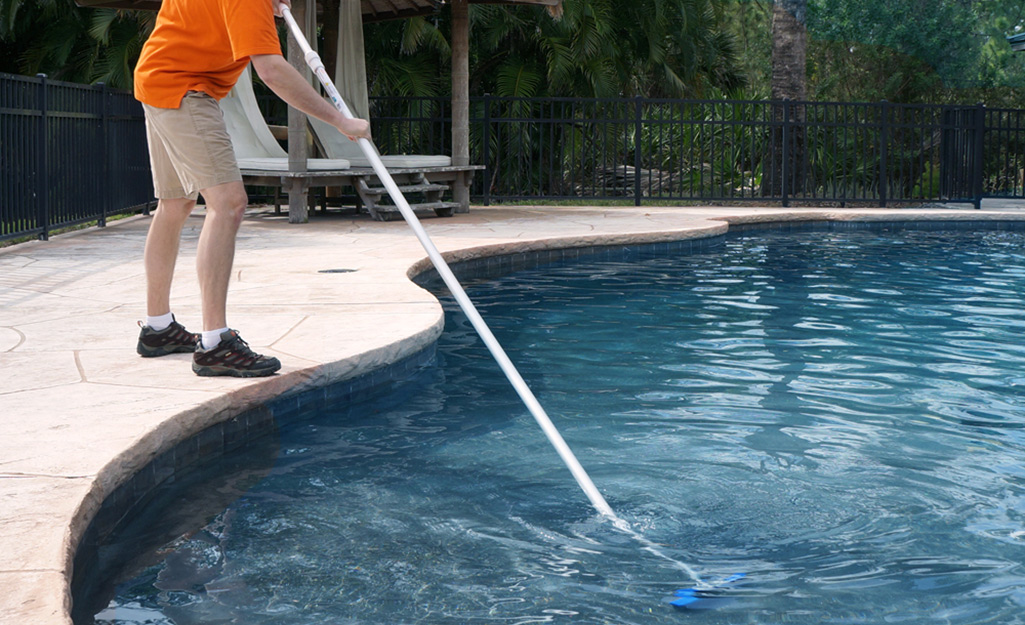
Pool algae occurs for many reasons. Low or inconsistent chlorine levels, faulty pool filtration and poor water circulation may be to blame. Preventing pool algae from flourishing helps to keep your pool operational so you can enjoy it all season long.
- The key to an algae-free pool is regular maintenance. Here are some tips to help you prevent algae from flourishing again.
- Test and balance your pool water weekly. The ideal pH range for swimming pools is 7.2 to 7.6.
- Check your filtration system weekly to ensure it’s working to properly circulate the water.
- Brush the pool surfaces (walls, floors and steps) weekly to remove algae that may be building up.
- Shock your pool water weekly to remove contaminants and clear up cloudy water.
- Add a preventative dose of an algaecide to your pool every week after shocking. Algaecides not only kill algae—they can prevent its growth as well.
- Clean all toys and swimwear that have been in natural bodies of water before allowing them into the pool to prevent the transfer of algae.
Now that you know how to get rid of algae in the pool, you'll be able to help prevent it with ease—and treat it when necessary. The sooner you tackle the algae problem, the easier it is to get rid of green algae, black algae and mustard algae. Use The Home Depot Mobile App to shop pool chemicals, accessories and algaecides, and have them delivered.
